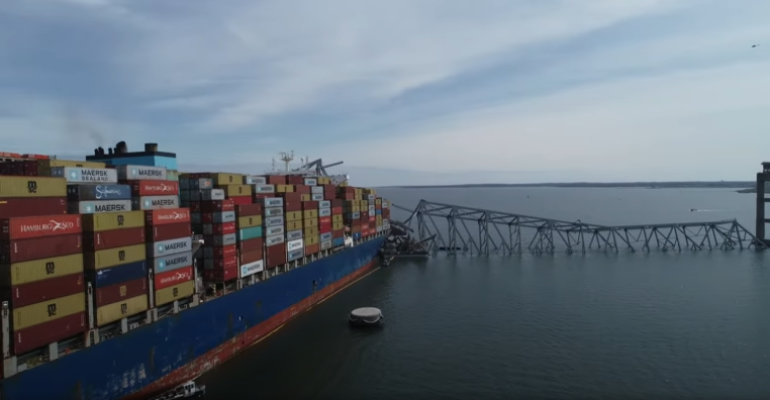The NTSB preliminary report looking into the containership Dali disaster at Baltimore, in late March, has received considerable attention. Much of the maritime media’s coverage of the report has focused on the potential causes of the power failures aboard the vessel in the minutes before its allision with the Francis Scott Key Bridge at the entrance to Baltimore’s harbor.
Besides airplane and vessel casualties, the NTSB also investigates accidents occurring on motor highways and railways; indeed the Preliminary Report did touch on issues related to the configuration of bridges over waterways generally.
The final report on the events in Baltimore, which NTSB Chair Jennifer Homendy suggested, in the recent House Transportation and Infrastructure hearing, would likely be issued 18 months out, will also offer comments about bridge designs, and, importantly, possible modifications that might offer protection against future vessel strikes.
Seatrade Maritime News was able to speak briefly with Holland & Knight (H & K) Washington, D.C. based Partner, Ben Allen, following the mid-May release of the NTSB’s report, and the Congressional hearings the next day. Prior to his joining H & K, he spent a decade at the NTSB as Senior Assistant General Counsel, and held other high level roles in the agency. Asked for his view on the preliminary report, he said: “I thought that it was quite good; sometimes these preliminary reports are bare-bones, this one had a lot more information than some that I’ve seen.”
He continued: “I think that the big surprise was that the ship had lost power, twice, in port, and that they had switched over to a different breaker set. I think that’s going to be a really interesting area for the investigation to follow up on.” He wondered aloud whether the initial event, clearly human error when a crew member closed an exhaust damper on the engine: “might have set off a chain of events where the breakers were not performing properly after that.”
Allen did question the 18-month timeframe for the release of a final report from the NTSB, saying: “There is a lot of attention on this…I would be really surprised if it took that long. They are going to focus as many resources as they can on this, and getting it done in a timely way.”
In the discussion with Allen, the subject of bridges did come up, with Allen reiterating remarks from NTSB’s Homendy during the hearing: “If you own or operate a bridge, or a waterway, you don’t have to wait for the NTSB to finish its report…you don’t need to wait for the recommendations. You should be out there now checking your infrastructure looking at whether you have the protections in place to prevent something like this from happening.”
The Unified Command handling the response in Baltimore announced plans to refloat the Dali on Monday, 20 May, at high tide, with preparations beginning on the previous day.
Copyright © 2024. All rights reserved. Seatrade, a trading name of Informa Markets (UK) Limited.
Add Seatrade Maritime News to your Google News feed.  |
